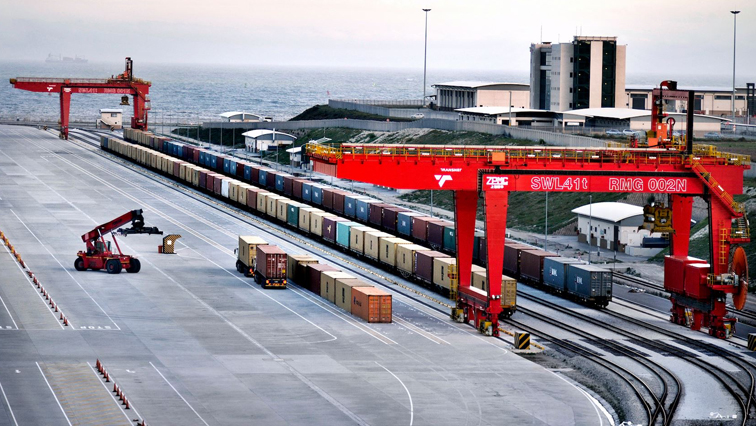

Founder: Turnaround Talk
The Oxford dictionary describes hindsight in the following way: the understanding that you have of a situation only after it has happened and that means you would have done things in a different way. Given what we know now about Eskom, and the absolute shambles the utility faces on a daily basis, would it not have been prudent to enforce stricter control/intervention measures on the utility in 2008 when the utility first implemented loadshedding?
Most of us would say yes; turnaround professionals would say absolutely arguing that even more controls would have completely altered the course of the utility.
We are now presented with a unique opportunity to apply thee learnings to ensure that Transnet doesn’t follow the same course. A recent article by News24 points to very close similarities between the two entities both of which are vital to the country’s economic growth.
High level view
Looking at the problem from a high level, the News24 article points out that Its infrastructure is failing, revenue and volumes are falling, and its substantial debt will soon have to rise further. Dozens of skilled people have left the company through a voluntary severance programme, and the entire executive committee is made up of new people – mostly new to Transnet and rail – with only one experienced person from the pre-2020 Transnet still in place.
The article adds that while Transnet has raised sufficient liquidity to see out this financial year, come the budget next February, it will need financial support from the National Treasury in the form of an equity injection, loan guarantees, or both. This is because, try as it might, Transnet will not be able to trade its way into profitability. Like Eskom, it is simply not earning the revenue it needs to fund operations, especially maintenance and service its debt.
There were high hopes for the company. Transnet welcomes a new executive which included a new CEO (Portia Derby), a new Head of Transnet Freight Rail (Siza Mzimela) and a new shareholder representative (Minister of Public Enterprises Pravin Gordhan). Enoch Godongwana (The country’s Finance Minister) and President Cyril Ramaphosa were both assured that the company was on track for a successful turnaround.
But the News24 article points out that the signs are now clear that this is a company in trouble. While over the past two years, Transnet has had misfortune piled upon misfortune – cable and other infrastructure theft, floods, a legal dispute with manufacturers over spare parts, and now a strike – hope is diminishing among its users over whether it has the management to turn things around.

Photo By: Transnet
Go slow on the tracks
The biggest concern lies with Transnet Freight Rail (TFR) and the volumes that are delivered across its networks.
The article points out that TFR generates the most revenue of Transnets six operational arms.
Since 2018/19, TFR’s volumes have been falling. As rail is a high fixed-cost business, every drop in volumes translates directly into lost profit. In 2018/19 TFR moved 215.1 million tons (mt) a year on its main corridors. Volumes have fallen every year since, and in 2021/22 TFR moved 172.7mt.
The target for this year is to get back over the 200mt-a-year level. Achieving this won’t be easy. In its annual report published last month, TFR said it aimed to move 74.2mt of export coal. Before the ink was even dry, the target for export coal was revised down to 60mt. This means at least 1.2mt a week must be hauled, with no slippage. In a media statement earlier in October, TFR said it had just hit 1.3mt of coal exports for the first time this year. So, before the strike, TFR was already far behind.
The article adds that from the perspective of TFR, the falling volumes are not a function of poor rail management. The triple whammy of legal disputes with equipment manufacturers that throttled access to spares, infrastructure theft and damage, and reduced rail infrastructure maintenance, have impacted Transnet’s performance.
Maintenance of these locomotives seems to be a major thorn in Transnets side. There are not enough operational locomotives to increase the company’s volumes.
The shortage of locomotive spares came about when Transnet went into dispute with the original equipment manufacturers (OEMs) of the locomotives supplied in the corrupted 1064 procurement. As a result, Transnet now has 313 locomotives described as “longstanding” and can’t be put into service.
While some need spare parts due to mechanical failings, many are locomotives that have been vandalized and stripped while on Transnet property. A smaller proportion of locomotives are parked due to collisions and derailments.
TFR’s acting chief commercial officer Bonginkosi Mabaso said in a media statement that procurement from all three OEMs – China’s CRRC Corporation Limited; Bombardier (now owned by Alstom); and General Electric (GE) – was affected, if not by legal dispute, by long delays between ordering and receiving parts.
Maintenance is a problem
We are fully aware of the fact that maintenance has historically not been Eskom’s strong point. A problem that the utility is paying for now in a major way. The News24 article points out that the same problem is taking place at Transnet.
The Africa Rail Industry Association (Aria), which represents Original Equipment Manufacturers, rail component manufacturers and operators – some of which hope to compete against Transnet soon – has done a simple analysis of the company’s maintenance spending over the past decade.
“In 2012, TFR spent R3.4 billion on maintenance. If maintenance spending had kept pace with inflation, TFR would have spent R5.57 billion in 2021/22. But, in its last annual report, TFR reported spending R2.6 billion for the year,” Aria CEO Mesela Nhlapo told News24.
Motala says that a third of TFR’s maintenance spend has been diverted to spending on security and dealing with security-related events.
“Our infrastructure condition is driven by three main things. First is theft, vandalism, and sabotage. This includes signalling equipment, wayside equipment, cables, and track infrastructure that’s been stolen. Every time we repair a cable, we add joins. The more joins, the higher the risk of failure.
“The second one is we are not generating the revenues that we need to support maintenance. So, we are falling behind on maintenance, not because we don’t want to do maintenance, but because the money just isn’t there.
“And lastly, more than a third of the money allocated for maintenance is now being spent to fix security issues. So, I’m responding to security where I should be doing maintenance. Security is not a Transnet problem. That’s something that SA needs to fix. But it does mean that it’s eating away at resources that should be used for maintenance, not just the money, but the teams, the equipment, and the materials that are going into replacement.”
To cover this up, the News24 article adds that a Transnet insider points out that the scope of maintenance work is often changed just before it is carried out, which allows executives to report on a full or very high completion rate, when the scope has been cut to 20% of the intended work. This has happened on numerous occasions over the past two years when it comes to the annual “shuts” on the major corridors, he said.

Photo By: Canva
Brain drain
Last week, Turnaround Talk published an article which pointed to the fact that Eskom was significantly overstaffed. The same cannot be said for Transnet which is suffering from a exodus of skilled staff.
The News24 article points out that hundreds of technical and managerial senior staff have left the organisation since Brian Molefe and Mzimela arrived in 2020.
A total of 459 head-office staff took voluntary severance packages (VSPs) offered in 2021, and several more longstanding senior staff have left in the past 12 months. News24 interviewed numerous Transnet insiders who have lost faith in the turnaround and who believe the organisation is at a crisis point.
Someone who worked at Transnet for decades told News24…when the new board came in there was a view that they needed to come in and stamp out corruption, and that was all-pervasive and existed everywhere. It wasn’t. It was quite isolated. But that view led to an insensitive approach to the staff, and a lot of people got disillusioned and took the VSP. This led to the loss of people who knew how to run the system, which is why they cannot turn this around.
The News24 article adds that during and after 2020, the entire executive committee but for one person (Head of Transnet Pipelines, Michelle Philips) left the organisation. Four out of six CFOs of the divisions took VSPs. The heads of five of the six divisions left the company. Critical operational people were lost, including the COO of the coal line and the Chief of Planning, as well as engineers and logistics professionals who had worked at Transnet for a lifetime.
You cannot simply press a button to replace skills. This takes time and considerable investment.
Urgent intervention is needed
On 10 November (almost a year ago), I penned an article which pointed out that both Eskom and Transnet were on the brink of financial distress.
While many turnaround professionals agreed with me, they pointed out that these companies could not be placed into business rescue and that a managed turnaround was needed. The splitting of Eskom into three operational units is one such intervention and we have yet to see any evidence of that taking place.
Repairing Eskom is a bit beyond the hope of normal South Africans, and it will take a water-to-wine miracle to save the company. It seems that the current state of play is to do what we can with the utility until we can invest heavily into renewable energy.
Can we afford to let Transnet face the same situation? Just this year, South Africa faced two perfect business opportunities which were somewhat thwarted by Transnet’s inefficiencies. Indonesia (the world’s biggest coal exporter) briefly banned coal exports at the beginning of the year while it dealt with its electricity crisis. While the ban only lasted a month, the country warned that its grid was unstable, and the ban could be implemented at any time. More recently, Europe is in the midst of an energy crisis and the demand for South African coal is extremely high. Again, this is being jeopardized by inefficiencies at a State-Owned Entity that is doing more damage to the country than good.




